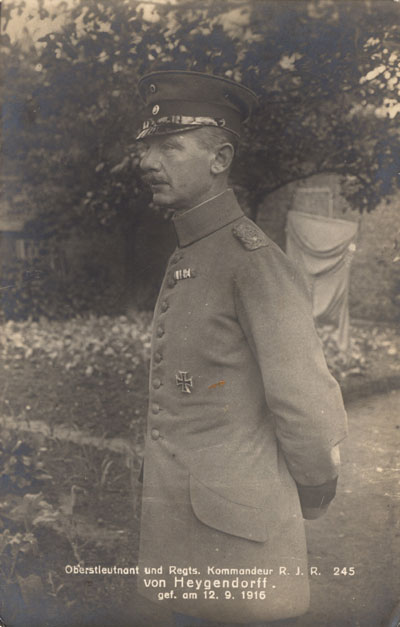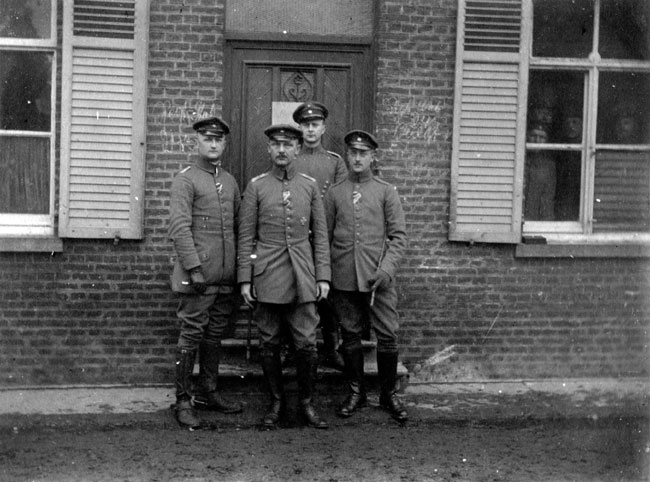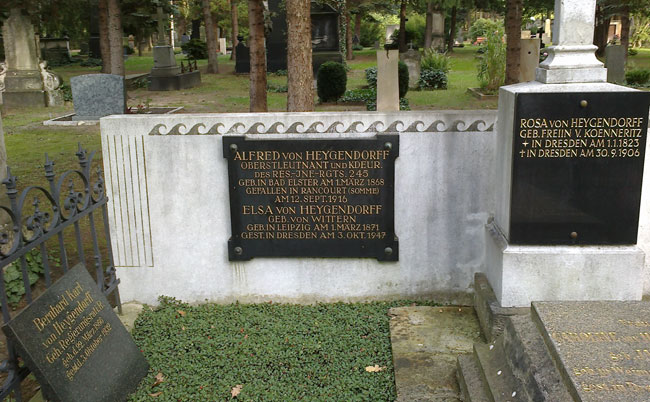The following day Major von Heygendorff was sent to take over Reserve-Infanterie-Regiment Nr.245 with 54. Reserve-Division of the Saxon-Württemberg XXVII. Reserve-Korps, then heavily engaged in the First Battle of Ypres.
His exemplary and energetic leadership of this undertrained and demoralised volunteer regiment in truly appalling circumstances earned him the Ritterkreuz of the Militär-St.Heinrichs-Orden (the highest Saxon and oldest German gallantry order) on 17th November.

Without exception the surviving writings of his officers and men describe him with great affection, often calling him the 'soul of the regiment'. This was magnified after his death when he became a symbol of the regiment's sacrifice on the Somme, much commemorated in regimental postcards and in the veterans' newsletter Was wir erlebten – 245er Erinnerungen ('What We Experienced - Memories of the 245ers'). In a 1922 issue, Professor Max Geissler of Leipzig wrote:
Rarely indeed has a regimental commander been able to describe his regiment as 'his' in such a strict sense as he could. Rarely indeed have those belonging to a regiment regarded their commander as 'theirs' in such a heartfelt sense [as we could].
As the division's senior regimental commander Major von Heygendorff was also well regarded by his superiors. During the Second Battle of Ypres in April 1915 he was entrusted by 54.RD with a critical role, as recounted in detail in For King and Kaiser . Considering the well-documented mutual distrust and antagonism which all too often arose between the Saxon and Württemberg elements of XXVII.RK, it is particularly remarkable that on this occasion he exercised direct command of Württemberg troops for two weeks. So far as we can tell from a survey of their (often frank and opinionated) literature, none of his Württemberg peers had a bad word for the Saxon commander of RIR 245.
While the XXVII. Reservekorps and attached units continued to hold the eastern end of the Ypres salient from Polygon Wood to Passchendaele, a task force of corps reserves including Major von Heygendorff's composite regiment (composed of a battalion each from RIR 245, 246 and 247) took part from 24th April in the offensive against the northern face of the salient. Driving southward toward Zonnebeke, 'Regiment von Heygendorff' took numerous British and Canadian prisoners before the enemy abandoned the tip of the salient under cover of night on 3rd-4th May 1915. The composite regiment was then disbanded and its triumphant Major commander took charge of RIR 245 again during the subsequent advance which took them as far as Verlorenhoek.

Subsequently promoted to Oberstleutnant, von Heygendorff's luck finally ran out when XXVII.RK was committed to the Battle of the Somme in September 1916. On 9th September his older son Egon (the regimental orderly officer of RIR 245) was severely wounded by artillery fire on the steps of his HQ cellar in Rancourt. Egon died the next day at hospital in Manancourt, and his father's last letter home was to break the news to his mother. On 12th September, as the published history of RIR 245 states:
At 7.15 pm a heavy shell smashed through the vault of the underground observation post and buried the entire regimental staff. Rescue efforts began at once, but only managed to recover the body of the revered commander an hour later. With Oberstleutnant von Heygendorff fell his adjutant Leutnant Müller, the commander of the MGK Leutnant Ramshorn, Leutnant Fischer-Brill and many brave runners.
Alfred von Heygendorff's younger son, Ralph, survived both world wars with the final rank of Generalleutnant in the Wehrmacht and died in 1953.






